CyberLink PowerDirector Help
Use keyframes when modifying your media clips in the PiP Designer to define the start and end points of the customized effects. In the PiP Designer you can use keyframes to change the media clip's position, size (scale), opacity, rotation, anchor point position, freeform, and 3D depth.
Note: once you have customized the effects on the media clip using keyframes, you can right click on the clip in the timeline and then select Copy Keyframe Attributes. This allows you to apply the same keyframe effects to another media clip in the timeline by right-clicking on it and then selecting Paste Keyframe Attributes. |
Keyframe Timeline
A custom keyframe timeline is generated for each media clip when you open it in the PiP Designer. In the below example, because the media clip is 10 seconds long on the project timeline, the keyframe timeline is also 10 seconds.
Note: if you cannot find the keyframe timeline in the PiP Designer, just click the |

If you'd like to view the video timeline, click the  button.
button.

The keyframe timeline lets you precisely place each keyframe, so you can time the applied effect in your video.
Types of PiP Keyframes
When using keyframes on media clips you can choose from the following types of keyframes:
•Linear: linear keyframes make changes to a media clip's properties gradually between two keyframes.
•Hold*: hold keyframes will maintain the current media clip's properties, until the next keyframe is reached, where changes are instantly applied.
Note: * optional feature in CyberLink PowerDirector. Check the version table on our web site for detailed versioning information. |
Adding Keyframes
To add a keyframe to the keyframe timeline, do this:
Note: if you cannot find the keyframe timeline in the PiP Designer, just click the |
1.Use the player controls to find the moment in your media clip where you want its properties to change, and then click  next to the property you want to change. This adds a keyframe to the corresponding keyframe track.
next to the property you want to change. This adds a keyframe to the corresponding keyframe track.

2.If required, use the player controls to find the end point of the change to the effect, and then click  next to the property again.
next to the property again.

3.Use the controls in the PiP Designer to modify the properties of the effect as required for this keyframe. In this example we are modifying the opacity of the media clip at the beginning of the clip.
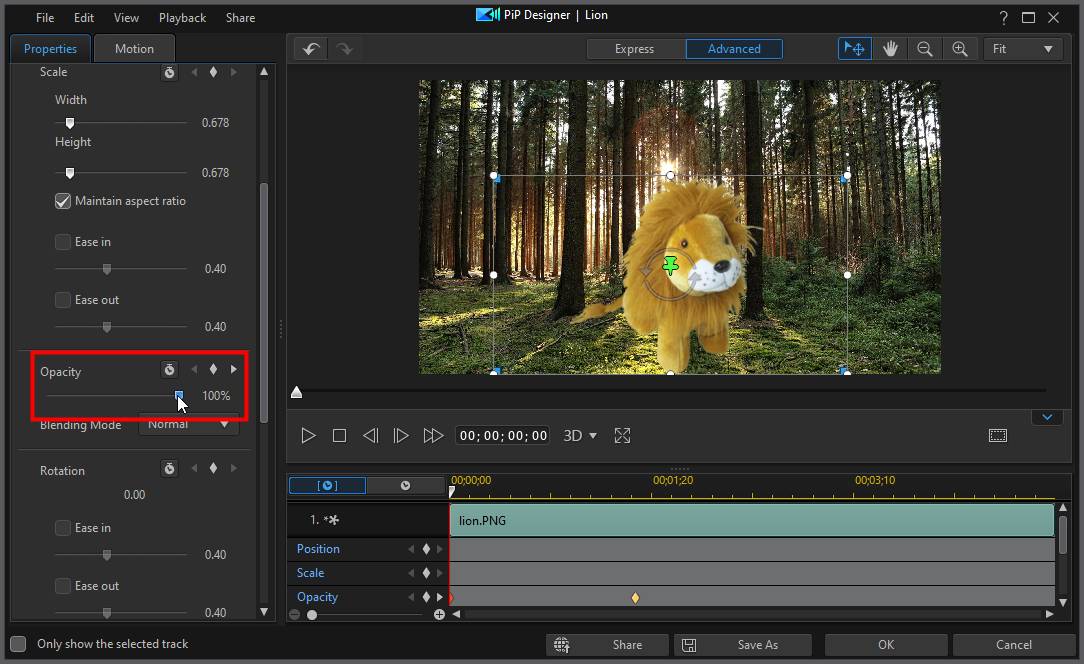
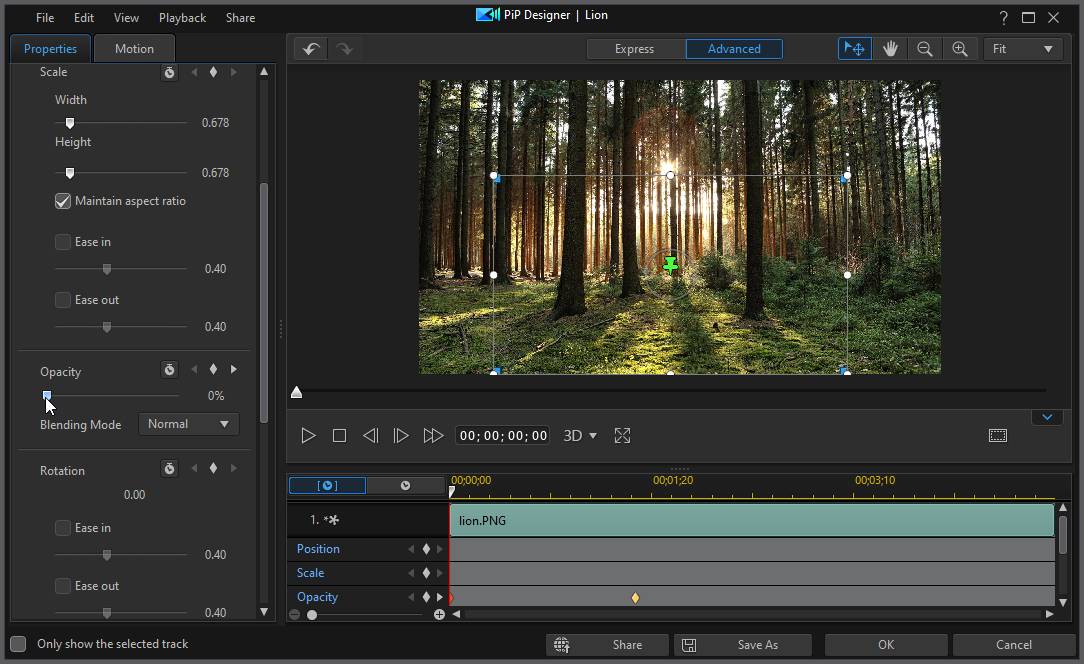
Note: keyframes are automatically added at the current timeline slider position when you change certain object properties. |
4.If required, right-click on the first keyframe and then select whether it is a linear or hold keyframe. If using a linear keyframe, at the first keyframe the media clip is completely transparent, and then slowly gets more opaque until it reaches the specified opacity level by the time the playback slider reaches the second keyframe.
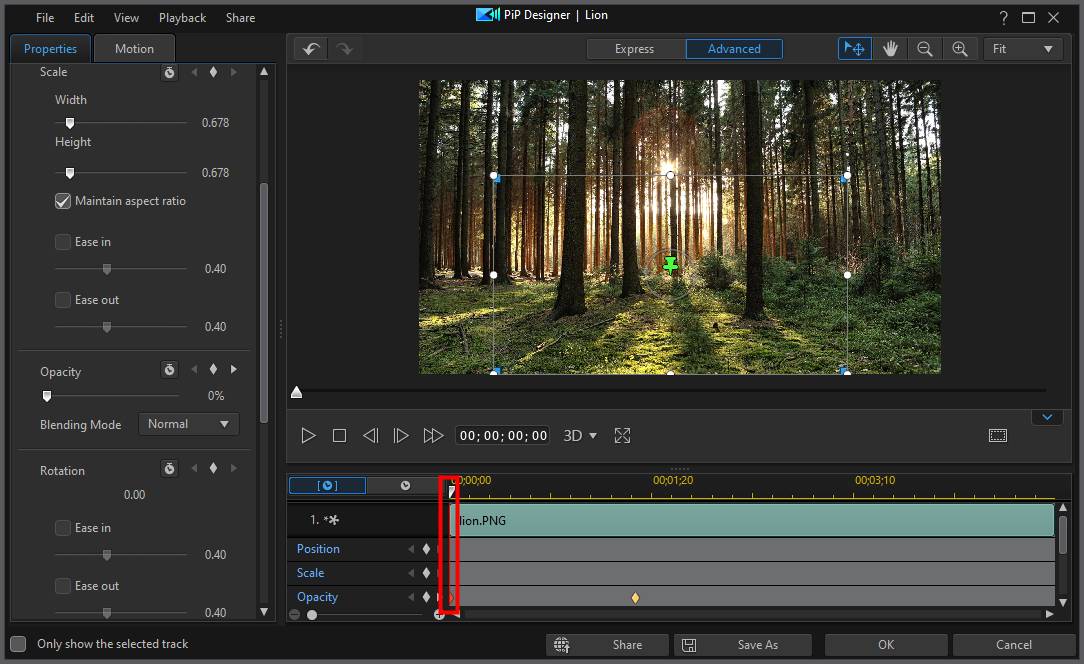
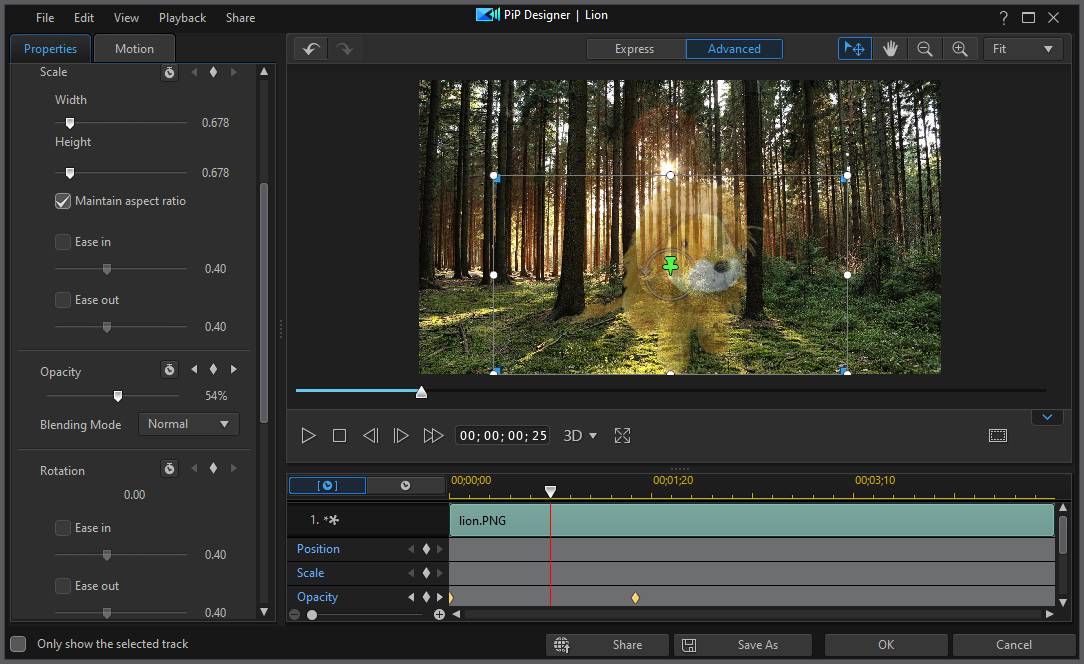

If you choose hold keyframe, when previewed, at the first keyframe the media clip is completely transparent, and remains this way until it reaches the next keyframe, where it becomes instantly opaque in this example.
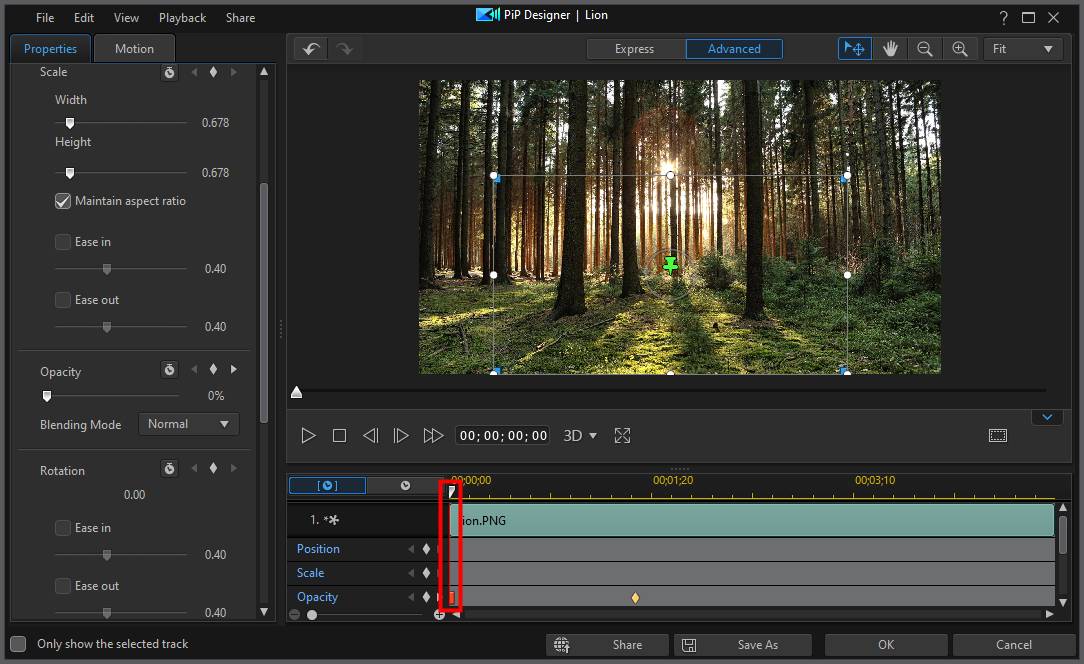


Note: you can also modify the properties of a keyframe by right clicking on it and selecting Duplicate Previous Keyframe or Duplicate Next Keyframe. Doing this copies the properties of the specified keyframe to the keyframe you right clicked on. |
5.Repeat these steps to create the kind of effect you want in your video production using keyframes to modify the media clip's properties and motion.
Modifying and Removing Keyframes
At any time you can modify the keyframes added, by selecting it and changing the media clip's properties, or by dragging the keyframe to another position on the keyframe timeline.
To remove a keyframe, select it on the keyframe timeline and then click  .
.
 button under the preview window to display it.
button under the preview window to display it.